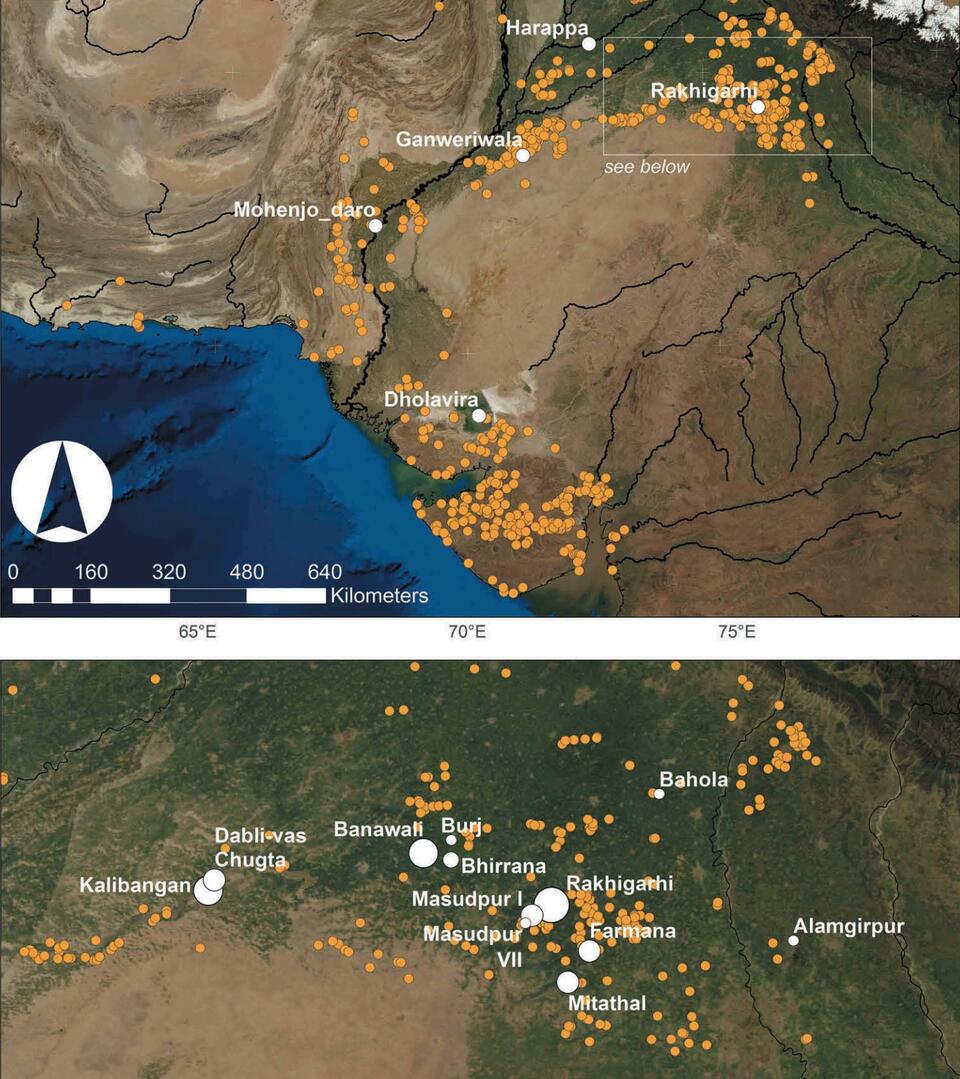The relationship between ancient Indus centers - which we know best and consider hallmarks of the civilisation - and the vast rural "hinterland" that surrounded them is the subject of this lucid paper. "Nothing can be more complex than the customs of an Indian village," is a guiding quote from a 19th century anthropologist the authors reference; indeed the way Indus village settlements and urban centers seem to have interacted defy many assumptions. For one thing, intense and sophisticated craft production is found in some relatively tiny areas. "Most ‘Harappans’ would not have lived in ‘Harappas’, and the vast majority of the population is likely to have lived in smaller settlements," as the authors so nicely put it (p. 15). Yet many of these smaller settlements seem to have been abandoned when the civilization's cities came to an end, just as they seem to been established as it was formed.
The focus here is on settlements in Haryana and Rajasthan, with some in Gujarat as well, although evidence is taken from excavations elsewhere as well. There is consistency in ceramic assemblages, and while "some Classic Harappan forms found at urban settlements, such as large ornately painted jars, are absent from the four village sites that we have examined, other vessel forms including Harappan-style cooking pots, perforated jars, and dish-on-stands are present, made in the local fabrics" (p. 5). There are also distinct regional variations, and examples of motifs and crafts in smaller settlements that have not been found elsewhere.
The authors also discuss highly sophisticated smaller settlements like Bagasra and Shikarpur, and conclude that "the urban–rural dialectic (Schwartz and Falconer 1994) is more complex than a straightforward relationship where villages supplied food and consumed urban goods in return. Rural settlements present a varied array of evidence and appear to have had complex and diverse relationships with urban centres" (p. 16). Above all, they remind us that while we may be bedazzled by ancient Indus cities, they were only a part of the story, crucially interwoven with complex smaller settlements sometimes no less sophisticated in craft and culture that need a lot more research to give us a comprehensive picture of ancient Indus times.

